Subscribe by Email
-
Recent Posts
Category Archives: Books
The Jaguar’s Children

Author John Vaillant is best known for his two nonfiction books “The Golden Spruce: A True Story of Myth, Madness, and Greed” and “The Tiger: A True Story of Vengeance and Survival,” which were both very well received. So when his debut novel “The Jaguar’s Children” recently came out, I snatched it up quickly to read. I was lucky because John Vaillant (pictured above) gave a reading from it here on Jan. 19 where I also heard him give an interesting talk about the writing of the book and he signed my copy. He said the novel came about during the time he and his family were living for a year in 2009 in southwestern Mexico in the state of Oaxaca. And indeed Mexico figures prominently in “The Jaguar’s Children” along with its tangled ties to the U.S.
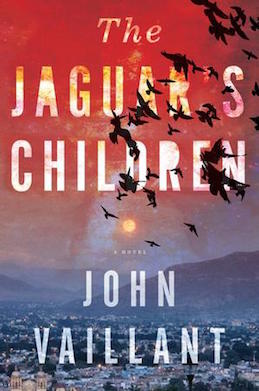
Specifically, the novel’s about two Mexican guys, friends who get trapped in a sealed water truck along with other illegal immigrants not long after they have crossed the U.S. border. The truck they are in has broken down somewhere amid the desert dirt, and the smugglers, who have taken their money, have not returned with the mechanic they promised. With little food and water, and not much air getting in, the occupants will likely live only a few days inside the truck if they don’t get help. Hector continually tries to leave messages (sound files) at an American number that he finds in his friend Cesar’s phone, hoping they can be rescued. But the cell phone coverage is very spotty and it doesn’t appear the messages are getting through.
Hell, five pages into “The Jaguar’s Children” and I felt clammy hands from their horrific situation. It’s as if you’re in the sealed truck with them where it’s very dark — like being buried alive. I’m very claustrophobic to begin with, even closed elevators make me a bit nervous. Fortunately the story veers off as Hector begins to leave cell messages hopefully to eventually go through at the American number about how he and Cesar came to be there, en route illegally to the U.S. He tells their different back stories that become as big a part of the book as the scenes in the truck, which are intermingled throughout. Hector’s story reveals a truth he comes to learn about his family, whereas Cesar’s uncovers a dark reality about his job researching corn production for the Mexican government.
Each of these tangential stories held my interest to a certain extent, but “The Jaguar’s Children” is not an easy read. While it does a great job depicting its Mexican atmosphere and the terrible struggles within the country, the novel does get confusing at times. Sometimes I had to reread parts just to figure out what was going on or which story was being described. It also uses a considerable amount of Spanish language, often without translation, which left me a bit lost. It took considerable concentration to get through everything in it, and at times I just wanted to cut to the end to find out if the two guys and people get rescued from the truck, but I held back and slowly plowed on.
In the end, I’m glad I stuck with it. It’s quite a rich portrayal of the Mexican experience, and quite dark. It cuts to the humanity really. And if a book can speak well to that then it must be good. Though I had to read “The Jaguar’s Children” quite carefully, it has stayed with me — its bleak depictions and ramifications. As for the guys and other people in the truck, you’ll have to read it to the very end to find out if they survive. I guess I’d give the novel 4 out of 5 stars if I had to rate it on Goodreads. Undoubtedly the author poured so much into it. You can really feel an immersion into the place and culture.
What about you — have you read any of this author’s books and what did you think? Continue reading
Posted in Books
8 Comments
Lean In and Wild
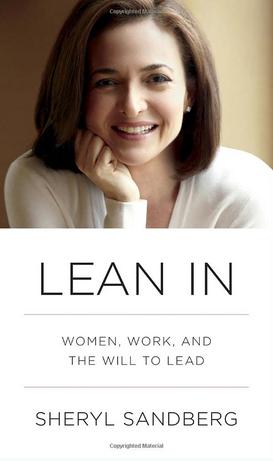
Sheryl Sandberg’s nonfiction book “Lean In: Women, Work, and the Will to Lead” came out last March and has stirred up a lot of talk either favorably or unfavorably about it ever since. Some have also seen her TEDTalk titled “Why We Have Too Few Women Leaders,” which she did in 2010. Currently Sandberg, the chief operating officer at Facebook, has a four-part series with co-writer Adam Grant on women at work running in the New York Times. The series continues with views that are in her book.
I picked up and read “Lean In” because my women’s book group chose to discuss it later this month, though I had been curious to read it since it came out. I don’t normally read business or books about employment, but it raises some interesting issues and I’m sure it’ll be a decent book for discussion as everyone has different work experiences and personal lives and views that will touch on things Sandberg brings up in the book.
Her main concern is the dearth of women in top executive or leadership positions at the workplace and that fewer women are aspiring to senior positions. She is upset that highly qualified and educated women are dropping out of the workforce and argues for getting more women in powerful positions by focusing mostly on what women can do to overcome the internal barriers that hold them back.
Yep, women, she maintains, are often holding themselves back from getting the top jobs. I’m sure many aren’t really pleased to hear this from a privileged, rich woman who had very powerful mentors along the way. As if she’s saying, I did it so what’s wrong with you? But generally I liked her book and thought it made many valid points. I didn’t agree with everything in it, but I did think it added to the discussion of working women, and I’m not one to dismiss it just because it looks inward at what women can do better.
In “Lean In,” Sandberg talks among other things about: increasing self-confidence, getting over stereotypes, reaching for opportunities, taking risks, getting mentoring, negotiating more, not worrying about pleasing everyone, applying for promotions, setting goals, and choosing a spouse that will equally share in household chores and childcare. She wants more women to “lean in” to their careers and more men to “lean in” to their families.
Quite a bit of what’s in the book might not be totally groundbreaking, you’ve likely heard these kinds of female business or self-help acumens before, but the book’s also well integrated with personal anecdotes and statistical research. I found both the stats and anecdotes revealing — and I thought quite a few of her tips were good and made me reflect on ways I could do things slightly differently at home or at work.
A few things I think that could’ve been cut from the book or that I would avoid would be: crying at work especially in front of your boss, smiling endlessly when asking for promotions, and asking any prospective employees whether they plan to have children. I guess I wouldn’t feel comfortable with these.
But I do share her premise that a world in which more women held power would be a better place, and I think it’s helpful of her to explore why we aren’t there yet. It’s definitely based on an array of complex reasons (both internal and external). I’d also point out there’s many ways to contribute to society and make an impact, and many ways to lead successful and fulfilling lives. Her corporate way is just one of many. I think she’d argue that women must keep going, reaching for goals and opportunities whatever their path might be and despite fears and obstacles. I found her book was good food for thought.
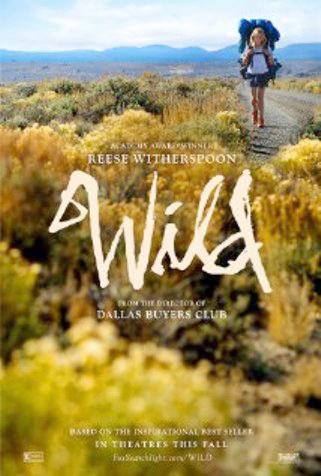
Meanwhile my husband and I saw the movie “Wild” last week, which I think we both liked. Many of those who read Cheryl Strayed’s 2012 memoir won’t be disappointed I think by the film version. It sticks pretty close to the book and enhances it with the beautiful visuals of the landscape and the performances by Reese Witherspoon as Cheryl and Laura Dern as her mother, both of whom have been nominated for Academy Awards for their portrayals.
“Wild” chronicles a young woman’s solo hike along the Pacific Crest Trail from the Mojave Desert to Washington State undertaken after the death of her mother and the end of her marriage. On the journey she finds solace and begins to heal.
I’m a sucker for such hiking/journey-types of finding oneself stories, and while I liked but didn’t love the “Wild” book, I was moved by seeing her journey on film. During Cheryl’s trek, there’s various flashbacks to her childhood with her brother and her single mother and also flashbacks of the downward spiral her life took in her late twenties. You feel her anguish and grief and also her healing as she moves forward. It’s a quiet film that captures her strenuous hike and internal struggles. It reminded me a bit of the 2010 film “The Way” with Martin Sheen, which similarly involves a long hike and the grieving process.
What about you have you read “Lean In” or seen the film “Wild” and what did you think? Continue reading
Posted in Books, Movies
22 Comments
The Enchanted and Unbroken
So the first book I read for 2015 … drumroll please … was “The Enchanted” by Rene Denfeld, which came out in March 2014. It left quite an impression on me and would’ve been my pick for best novel of 2014 if I had read it just a few weeks back. It’s very dark and brutal in some places but beautifully written and very well done.
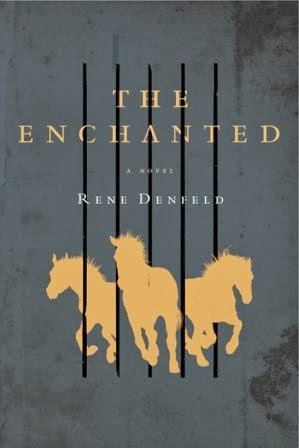
How to explain it? The novel takes place at an old stone prison where some of the inmates wait on death row. There’s a warden, a priest, and a lady investigator who visits trying to discover buried information about her clients’ pasts to save the soon-to-be executed. One part of the story is about her life and a case she is working on to save a prisoner named York. He doesn’t want to be saved though, but she pursues it, revealing some ugly truths about his past (and her own) while investigating in his hometown.
The other part of the story is about what goes on at the prison as told through the eyes of a reclusive death row inmate. All the awful things you hear about in prison and among inmates manifests themselves in the story in brutal ways. To escape his situation, the inmate disappears in his books and re-imagines the prison as an enchanted place where fantastical creatures rome. He’s fearful, living in his cell with covers over his head, but he’s able to sense what others cannot.
“The Enchanted” is an unusual and unsparing story about life on death row. It’s not too political (there’s characters in it on both sides), it’s not sentimental (definitely not Disney), it’s not forcing something down your throat, but rather by the end it gets to something of what it is to be human — both the violent and the good. You sense the humanity of those involved.
I can’t say I really realized what this book would entail when I picked it up. It’s quite harsh, so be forewarned. It’s not a light, feel-good book. It’s about the exact opposite of my last read “The Storied Life of A.J. Fikry,” which I found too sentimental. This one is not anything like that. Normally I would not pick up a novel about a death row prison, but I’m very glad I did. Despite its darkness, I was taken by the beauty of the book — the author’s descriptions — and how well it is done — exploring such themes of the human condition. It pretty much blew me away.

Speaking of humanity, I did see the film “Unbroken” the other night, and while I did think the film was good in various respects, I’m sorry to say it didn’t fully capture the essence of Laura Hillenbrand’s book about Louis Zamperini’s incredible life story. Notably it misses quite a bit of the context of the history in her book, and what life was like for servicemen in the Pacific theater during WWII. It also misses Louis’s formative post-war years completely by just putting a postscript at the end of the film.
I liked the early parts of “Unbroken” best of Louie running, and the flying scenes of the WWII bomber plane. The scenes on the raft were also vivid and Jack O’Connell does quite a reputable job as Louis Zamperini. But the brutal scenes once Louie gets captured and sent to the Japanese POW camp take a toll. As my nephew said: the film felt like a long series of really bad stuff occurring to one person. And for me: who wants to watch a movie of two hours of torture? Without more historical context of the collective war experience, and Louie’s redemption later in life, the film misses out on being a lot more. I think Hillenbrand would stress that Louis Zamperini was just one among hundreds of thousands of Allied servicemen who sacrificed and was a hero during WWII. Through her book, we get to learn a little bit more about their service in the Pacific theater.
What about you — have you read (or plan to read) “The Enchanted” or have you seen (or plan to see) the film “Unbroken” — and what did you think? Continue reading
Posted in Books, Movies
4 Comments
Still Alice, A.J. Fikry, & Imitation Game

I haven’t posted lately as I have been busy with all things related to Christmas, but my husband and I had a lovely week at the beach in California visiting my folks. Now we are back to the snow in Canada, wondering how the vacation went by so quickly. It’s the last day of the year, so I want to wish everybody a very Happy New Year! I’m sure like many of you I’ll be setting new reading goals in 2015, such as mixing in more nonfiction and maybe classics and upping the number of books that I hope to read. I also want to review a book from each month that’s just come out, thereby staying more current and topical. Meanwhile I have a few mini-reviews of books and a movie I saw on break.

The first is Lisa Genova’s 2007 debut novel “Still Alice,” which I wanted to read as it is coming out as a movie with Julianne Moore and Alec Baldwin on Jan. 16. Much buzz has been talked about of Moore’s performance and whether it’ll be award-winning, so I was game for the book. Granted, it’s a bit of an odd choice at Christmas break, reading a story about a successful female professor at Harvard who gets diagnosed at 50 with early-onset Alzheimer’s disease. It’s quite sad sort of like all the plane crash news of AirAsia on TV this past week. How much can one take that’s depressing?
Yet “Still Alice” doesn’t bog down in overly sentimental, emotional gush. It tracks Alice’s diagnosis and what happens to her professional and family life as a happily married working woman with three grown children. As the disease progresses, the bonds of the family are tested, as well as Alice’s own identity of who she is if not the brilliant professor she once was. The novel’s a compelling quick read and is informative about the disease and its genetic link and testing. I flew through it, wanting to hear more of Alice even though her prognosis isn’t good. Also having the book told from Alice’s point of view, as she struggles through, definitely makes it more unique from other Alzheimer’s stories I’ve read, which are often told from the caretakers point of view. It adds more value and understanding to her situation too.
I liked “Still Alice” though there were a couple times that strained my believability, particularly the part where Alice shows up to teach the next semester without having told the university what’s happening despite the disease’s evident progression. She’s in denial all right, but she should have just told them and taken a leave instead of having to be confronted by the department head. Still it’s a moving book about a terrible disease that’s touched so many people’s lives. I’ll be curious to see the movie.
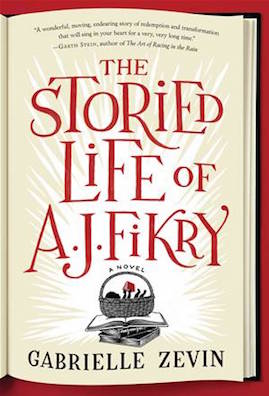
I also liked Gabrielle Zevin’s “The Storied Life of A.J. Fikry,” which has been quite popular this year. It’s a novel about a grumpy bookstore owner and widower on an island in New England whose life becomes transformed after a two-year-old baby is left abandoned at his store. Most of it takes place at the bookstore and captures a bit of the magic of books and bookselling so I was eager to read it having worked during my younger years in indie bookstores.
The novel starts strong and I immediately thought I was going to love it. There’s both humor and heart to it, and the first encounter between A.J. and the book sales rep Amelia is a funny exchange. The story also has a bit of intrigue when A.J.’s rare book of Poe’s poetry is stolen and the child is left at the store. The island clientele also makes for fun characters and a good book community.
“The Storied Life of A.J. Fikry” seems to have all the right ingredients but then somewhere along the way it becomes too sentimental and I couldn’t shake it for the rest of the book. Just seems a bit sweetened. So I liked it but didn’t end up loving it. Drat. I also thought it would delve more into books than it actually does. Oh the stories I could tell about the bookstores I ended up at.

Last but not least, “The Imitation Game” is a movie I would highly recommend. The history behind the breaking of Germany’s Enigma Code during WWII is fascinating, and it stars Benedict Cumberbatch as Alan Turing, the real life mathematician who helped solve the code. What more do you want? It’s a race against time during the war, and not only do the code-breakers have to crack the code against a machine considered unbreakable, but once they do then they can’t let the Germans suspect they solved it. The film’s great and also involves the sad fate of what happened to Alan Turing after the war (no spoilers here). So far the film’s my favorite going into award season, but I still have plenty of others to see, so stay tuned.
What about you – have you read or seen any of these or do you plan to? And what did you think?
Continue reading
Posted in Books, Movies
29 Comments
Unbroken

I’m ready for the movie adaptation of “Unbroken” — at least I think I am — I just finished the 2010 bestselling book by Laura Hillenbrand. It’s incredibly powerful for sure, and one of the most epic war survival tales I’ve ever read — though I’m sure there are many grueling accounts I haven’t gotten to. Just this year, I read Eric Lomax’s book “The Railway Man,” which is another chilling account of life in a WWII prisoner-of-war camp. And a few years ago, I read David Howarth’s epic true story “We Die Alone” about a Norwegian resistance fighter who somehow survives a Nazi ambush and escapes to an arctic village. Check those out if you’re feeling brave, or if you want to read two other incredible World War II survival stories.
I think I’m nearly the last person on Earth to have read “Unbroken: A World War II Story of Survival, Resilience, and Redemption.” It sat on my shelf for four years, collecting dust, but I knew I’d get to it. I’d heard all the amazing things about it, and in the end, it lived up to it all. For being nonfiction, “Unbroken” is not a dense or heavy read. It’s a quick page-turner, and I plowed through it with zest, careful not to miss a word. I wanted to get to the bottom of Louis Zamperini’s fascinating life, and Laura Hillenbrand’s flowing narrative and amazing research perfectly led the way. Not only does Hillenbrand’s book lend insight into Louis’s own life, but it also captures what the war was like for so many servicemen in the Pacific, especially in the air battles.
Even without the war part, it’s incredible that Louis Zamperini, who apparently was a total hellion as a kid growing up in the 1920s and ’30s in Torrence, California, became an Olympic miler in the 1936 games, qualifying at only 19. He was expected to be the first ever to break the four-minute mile, but then WWII broke out and he enlisted.
“Unbroken” recounts Louis Zamperini’s service as a bombardier on a B-24 bomber, which eventually was shot down by the Japanese while on a mission over the Pacific. He miraculously survived 47 days lost at sea on a raft with the plane’s pilot before being picked up by the Japanese and transferred to a prisoner-of-war camp. There, he was tortured and endured the wrath of one particularly sadistic guard nicknamed “The Bird.”
Ugh, The Bird is really difficult to handle in this book, and some of the violent and brutal parts inflicted on the prisoners by him are hard to read. The starvation and humiliation, as well, is stuff you can’t fathom. The POWs suffered through so much, it’s harrowing to imagine. I felt very vengeful toward The Bird and hoped he would be brought to justice after the war, but it doesn’t appear that’s what happened.
The book’s ending deals with life after the war for Zamperini and a few other POWs. Louis marries and becomes a devout Christian after hearing the sermons of Billy Graham, which ends up turning Louis’s alcoholic life around. Eventually he returns for a visit to Japan, forgives his captors, and is chosen as one of the carriers of the Olympic torch in Japan for the 1998 Nagano Games.
It’s quite an emotional ending, though the post-war years of the book feel a bit more rushed and seem perhaps not as thorough or as deep as what happens to Louis during the war. I’m sure I probably gave away too much of the synopsis of the book, but even knowing that, it doesn’t do justice to reading the story. You might know that “Unbroken” is about a prisoner-of-war’s experiences during WWII, but until you read the Hillenbrand book, you won’t really get the gist of how remarkable the story really is. I’m sure it is one of my favorite reads of the year. I plan to see the movie, but I know it might not have the same impact as the book, which I seemed to have lived through in my head, rooting for Louis to survive over all the intolerable hardships.
What about you — do you plan to see the movie? And did you read the book first — and what did you think? Continue reading
Posted in Books
13 Comments
December Preview and Life Drawing

Yikes winter hit hard here on Black Friday, with -6F temps and a wind chill of -27F. By the evening it was a full-on blizzard with a heavy dumping of snow. Now the storm seems to have passed, but it’s still bitter out there and best to stay inside, gazing out the window next to the fire place sipping hot cocoa. Yesterday between wearing a neck gaiter, two hats and goggles, I was able to cover my face while walking the dog in the park, which worked quite well. Only the times I had to take my gloves off for moments, did I freeze. After this, I feel like with the right equipment I could be ready for Mars.
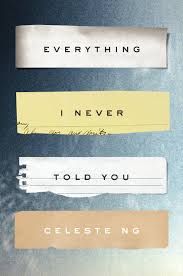
But it’s too late now to moan, December is upon us. And pretty soon everyone will be putting their Best of Book Lists out for 2014. Already Amazon’s editors’ book picks for 2014 seem quite interesting. For the best book of the year, the editors there picked Celeste Ng’s debut novel “Everything I Never Told You,” which is about a Chinese-American family living in Ohio whose oldest daughter is found to have drowned in a nearby lake, thereby unraveling the once close-knit family in unexpected ways, according to Booklist. The novel came out this past June, and I definitely plan to pick it up in the near future. Have you read it?
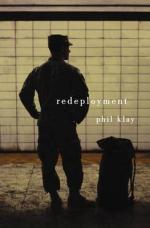
Also I failed to mention last week a congrats to Phil Klay for winning this year’s National Book Award for fiction for his collection “Redeployment,” which includes twelve stories about the Iraq War and its aftermath. War novels about Iraq and Afghanistan surely have gained considerable attention the past few years with the publication of Ben Fountain’s book “Billy Lynn’s Long Halftime Walk” and Kevin Powers’s “The Yellow Birds.” However after all the talk about “The Yellow Birds” in 2012, I can’t say I liked that book much, which disappointed me. And while I’m not a big reader of war writing, I’ll likely pick up “Redeployment” by Phil Klay, who served as a Marine in Iraq from 2007-2008.

As for new December releases, there’s not a lot of literary fiction coming out this month. Of those that are, perhaps “The Boston Girl” by Anita Diamant might entice me most. According to Amazon, it’s about the ties of family, friendship and feminism through the eyes of a young Jewish woman growing up in Boston in the early 20th century. I quite liked Diamant’s 1997 bestselling first novel “The Red Tent” so I think this one could be interesting as well.
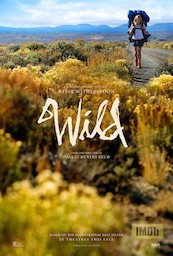
As for movies out this month, I plan to see “Wild” with Reese Witherspoon, which is the movie adaptation of Cheryl Strayed’s 2012 book “Wild: From Lost to Found on the Pacific Crest Trail.” I read and reviewed that book that year, and while I liked it, I also had a good share of reservations about it, too. Still I’m curious to see what Reese will do with the role.
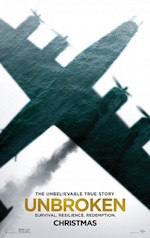
I also plan to see “Unbroken” towards the end of the month about Louis Zamperini’s prisoner-of-war experiences during WWII. Angelina Jolie directs this epic, which I hope will live up to some of the popularity of Laura Hillenbrand’s 2010 bestselling book. But first I plan to read it before seeing the movie on the big screen.
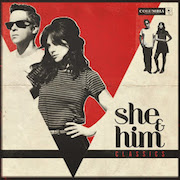
In music this month, I’m sure I’ll be listening to a lot of Christmas songs as the month goes on. But for new releases, I’ll pick the covers album “Classics” by the duo She & Him to check out.
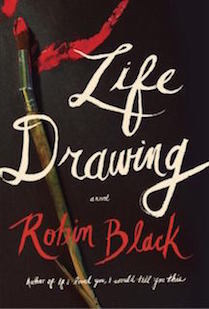
In other news, I finished Robin Black’s 2014 novel “Life Drawing” this week, which is about a middle-aged married couple (a painter and a writer) who move to the country to do their work and to heal after the wife’s infidelity. Yet ultimately their lives are disrupted in various ways by a British divorcee and her daughter who move in next door. At first the couple really takes to them but then things become entangled and confidences breached, causing a fall out for all.
The plot is quite interesting in its exploration of the couple’s marriage, which is weighted down by the past infidelity, and the secrets they keep and the confidences they share with others, as well as their many layers. I just wish the novel hadn’t saved much of its action till the final few pages. It seems to very subtly build and build and build and I began to wonder if anything was ever going to happen in the book, though I did keep reading to find out. But much of the book seems quite serious and grim, a chronicle of the artistic couple’s working lives together, which seems rather joyless. I couldn’t bond much with the wife who tells the story. Yet the setting of the country house and barn, the neighbor next door, and the married couple’s tension-filled lives came off quite vividly to me.
So I guess I feel half and half about “Life Drawing.” I’d say it’s a quiet book with a big ending. It explores some interesting themes. I liked it but maybe not effusively so.
What about you have you read this one and what did you think? If not, what releases are you looking forward to in December? Continue reading
Posted in Books, Top Picks
6 Comments
Holidays and Beauty Schools
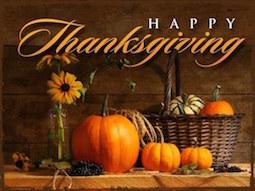
Wow it’s almost Thanksgiving and the start of the busy holiday season, my, how time flies! I wish everyone in the States a very happy turkey day with family and friends. In Canada I hope to re-celebrate the holiday with a smaller feast with my husband and dog since it’s a regular work week here, blah. Where’s the fun in that?

We are supposed to see some new snowflakes this week so I might have to splurge and get a hot cocoa like this decadent one I consumed recently. It was oh so good but gave me a headache from the intense sugar rush. How cold has it been where you are? Hopefully not as bad as the snowbelt of Buffalo. Those poor people are having to tunnel out of their houses!

My two-year-old Lab, Stella, sure knows how to spend these wintry afternoons. She likes to run at the park in the early mornings and evenings but in the afternoons she dozes off into dreamland, preferably near the floor heater. I think she’s dreaming sometimes about chasing bunnies and squirrels because her paws wiggle and she makes funny sounds.
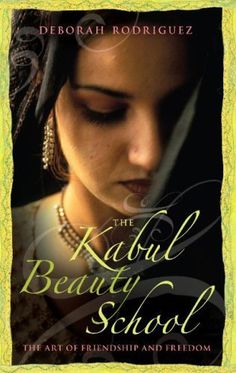
This week I finished the 2007 nonfiction memoir “Kabul Beauty School: An American Woman Goes Behind the Veil” by Deborah Rodriguez & Kristin Ohlson, which was a book club read that our group discussed on Thursday. It’s about a woman from Michigan, Deborah, who travels with an aid organization to Afghanistan in 2002 shortly after the Taliban has been driven out. There, she gets the idea to help set up a beauty school for Afghan women to train to become hairdressers and salon owners. The memoir chronicles Deborah’s efforts to help set up the school during the four to five years she’s there and the women she meets along the way, many of whom become her students. The book gives a glimpse into Kabul and Afghan society that many in the West don’t know too much about.
I appreciated her efforts to try to help the Afghan women and the insights she provides into life there. I thought she was bold — and a bit foolish perhaps — to go to Kabul when the country was still so torn from war and when she still had two boys at home. Like others in my book group, I liked parts of the memoir, which is filled with stories of women’s lives there, but also thought the book has some drawbacks. It’s not written particularly well, and the woman, Deborah, makes some cultural blunders along the way that at times puts her Afghan women friends and students in awkward or dangerous situations. Also why she marries an Afghan man who she’s barely just met there after going through two bad marriages in the States seems beyond perplexing. She’s definitely got an impulsive, crazy, and emotional streak about her that a few in our group found pretty annoying.
Still I’m glad I read it for opening my eyes a bit more to life in Afghanistan, which I’ve also read about in Khaled Hosseini’s novels. Anything that can help women to work or make money there, I’m definitely for. “Kabul Beauty School” certainly paints a bleak picture of women’s lives in Kabul, but it also captures women’s eagerness for change and gaining rights to make their own living and lives. You definitely root for them in this book, which counts as my nonfiction November read, which is a meme co-hosted by Kim over at the blog Sophicated Dorkiness. Check out all the nonfiction this month people are reading!
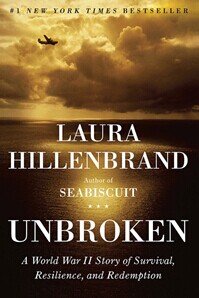
Meanwhile I picked up two novels from the library: “Life Drawing” by Robin Black and “The Girls of Corona del Mar” by Rufi Thorpe. I hope to race through both before consuming the nonfiction epic “Unbroken: World War II Story of Survival, Resilience, and Redemption” by Laura Hillenbrand, which is coming out as a movie at Christmas. Hmm … so much reading, so little time.
What about you — have you read any of these and what did you think? And what does your reading look like over the holidays?
Posted in Books
14 Comments
Mockingjay
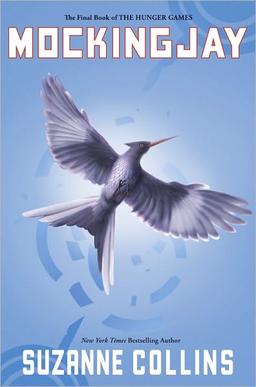
I finished Suzanne Collins’s last book in her trilogy “Mockingjay” in time for the upcoming movie adaptation. I’m geared and ready, but think it was a mistake for them to cut the final book into two movies. How greedy is that? Time magazine says this movie is little more than a “placeholder” for the finale “Mockingjay Part 2,” which is expected to hit theaters on Nov. 25, 2015. It’s too bad they didn’t keep it as one movie because I think it would’ve given the movie better pacing and action — these are my thoughts even before seeing it.
As for the book, it’s quite good like the others. You might recall from the end of the last Hunger Games, Katniss is taken by the resistance to District 13, an underground place whose people are unifying the districts of Panem to overthrow the tyrannical Capitol. There, she’s reunited with her mother and sister Prim, and goaded into becoming the symbol for the rebellion, the Mockingjay. But the Capitol is running lethal bombing raids and has kidnapped Katniss’s boy wonder Peeta, turning him into a weapon to hurt her and the rebellion. It’s a dicey situation and one that eventually leads to all out war.
“Mockingjay” doesn’t include a Hunger Games competition like the other two books, but its war games make the latter half of the novel pretty tense and compelling. Ultimately Katniss is left in a precarious situation, leading a rebel group, which includes her love interests Gale and Peeta, on an invasion of the Capitol — her mission being to assassinate President Snow. It’s an action-packed, mostly underground journey full of mines, wild creatures, and Capitol troops at their heels. The odds aren’t exactly in their favor one might say. You have to wonder if Katniss and the rebel group will get to Snow and overthrow the Capitol, and if they survive, if she will pick Gale or Peeta to be her man.
The ending has a few fatalities and surprises that skew what you might be expecting. It’s clear in this trilogy that no one really gets out unscathed. It’s a sci-fi post apocalyptic world that’s super violent and where loyalty and trust are hard to come by. The trilogy’s message seems to be one of warning and anti-war. I liked the young-adult series and think Collins on the whole did a good job putting it together. It’s a daunting militaristic world — we could face in the future — with little resources and full of damaged and hardened characters.
What about you — have you read “Mockingjay” and what did you think about it? Do you plan to see the movie? Continue reading
Posted in Books
7 Comments
Before I Go to Sleep
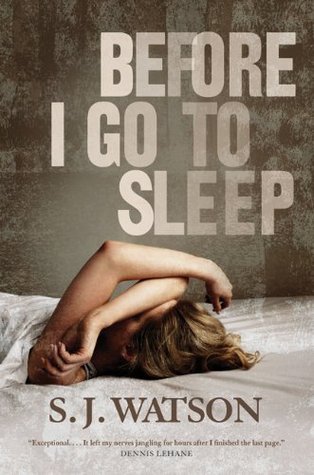
If you like anxiety-inducing psychological thrillers, S.J. Watson’s debut bestseller “Before I Go to Sleep” hits the big screen this Friday, right in time for Halloween. It’s a spooky premise for sure, about a woman who suffers from amnesia from a traumatic accident in her past. Working with a doctor, she begins to write down what little she recalls of her life and what happened to her, but soon realizes she doesn’t know who to trust or what to believe.
The book reminded me a bit of “Shutter Island” mixed with “Fatal Attraction.” It’s a mind trip into what’s real in the woman’s life, but there’s also a dangerous person who’s leading her astray. I flew through “Before I Go to Sleep” as it’s a suspenseful page-turner, figuring out who the bad guy is and whether the woman will piece together her memories in time to save her life. A few of the characters leave or betray her in ways that keep you guessing.
I enjoyed the book, especially once I suspended my disbelief a bit about the premise and a few parts of the plot. It’s better if you just go with it. At times it gets a bit repetitive because the woman, Christine, forgets the memories of her life each night when she goes to sleep. So every morning she wakes up a confused mess not knowing who she is till her doctor calls reminding her to read the journal she’s been keeping.
It’s sad really, thinking that people exist in such states in mental facilities, where Christine in the book spends a great deal of her adult life before getting released. (Apparently the story was inspired by a real amnesiac case.) Upon release, Christine is quite the emotional wreck, as one might expect to be if you awake each day with little to no memory, so you have to work through a lot of her angst throughout the novel.
No wonder Nicole Kidman took on the role for the movie. She seems to be good in troubled, emotionally-wrought parts — a good cryer, which is necessary for the role of “Christine.” Colin Firth plays opposite Nicole in the movie, which is interesting since they recently starred together in “The Railway Man” movie. For sure, they make for a dynamic onscreen combo.

I can’t say too much more about the book’s plot in order not to give anything away, but I’m sure it’ll make for a high-octane movie. I hope to see it soon. It’ll be interesting to see if the movie stays true to the book or if it’ll change any plot lines or the ending, hmm … I’ll have to check it out to see.
If you like such thrillers, British author S.J. Watson has finished his next book “Second Life,” which will be out in the U.K. in February 2015 and will follow later in other countries. I’m sure like this one it’ll be quite an anxiety-induced ride.
How about you — have you read this book or do you plan to see the movie? Continue reading
Posted in Books, Movies
8 Comments
Awards, Festivals, and Henrietta Lacks
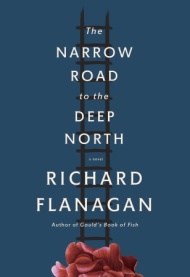
It’s been a busy past week in book-related news. First off, congratulations to Tasmanian author Richard Flanagan for winning the 2014 Man Booker Prize for Fiction for his novel “The Narrow Road to the Deep North.” Like Eric Lomax’s memoir “The Railway Man,” which I read and reviewed earlier this year, Flanagan’s book is about a prisoner-of-war working on the Thailand-Burma “Death” railway in WWII. The main character is an Australian surgeon whose life is a daily struggle to save the men under his command. The novel’s inspired by Flanagan’s father’s experiences as a Japanese prisoner-of-war at a camp where 14,000 died. I know I’ll want to read “The Narrow Road,” but I still have another scary P.O.W. book to read first … “Unbroken” by Laura Hillenbrand. Need I say more? The film opens at Christmas.
Meanwhile our city’s annual book festival, Wordfest, has been going on this week, and as usual it’s been great hearing authors do readings and interviews about their latest books. I’ve been attending an event each evening and so far have heard Emma Donoghue (“Frog Music”), Damon Galgut (“Arctic Summer”), Tahereh Mafi (“Shatter Me” series), Veronica Roth (“Divergent” series), Padma Viswanathan (“The Ever After of Ashwin Rao”), Alison Pick (“Between Gods”), and Miriam Toews (“All My Puny Sorrows”). Some of these authors’ works I’ve known and others I have not, but hearing from them made me interested in their works nonetheless.
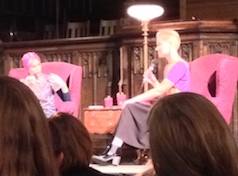
Apparently 600 people were in attendance when authors Tahereh Mafi and Veronica Roth interviewed each other at the Knox Church downtown. They held a good discussion and are quite poised and mature for their young age and huge success (both are only 26!). Call me a YA ignoramus, but I didn’t know about Mafi’s “Shatter Me” series beforehand, but she spoke very eloquently about her life as a writer and what it takes. Roth was cool as well. I read and reviewed her book “Divergent” in March before the movie came out. She came off looking a bit punk with very short, dyed blond hair and black boots. She’s tall to begin with, around 6 feet, whereas Mafi says she is 5’ 2.” Roth says she started fiction writing everyday when she was 11 (holy smokes), whereas Mafi took it up after college. I’m not sure what is next for either of them, but they still have long writing careers ahead.

It’s been an inspiring book festival this year, but it’s not over just yet. I still have two author talks left to go to: Canadian author Kathleen Winter tonight and Australian author Tim Winton on Sunday. You might recall Winter’s 2010 novel “Annabel,” which I read and reviewed earlier this year. She’ll be talking about her new nonfiction book “Boundless: Tracing Land and Dream in a New Northwest Passage” about a journey she took from Greenland to Baffin Island and all along the storied Northwest Passage. I can’t wait to hear about it and will likely get the book as she is such a terrific writer. Tim Winton, too, will be talking about his latest novel “Eyrie,” which I reviewed earlier this year. He’s been a finalist for the Booker Prize twice and is an amazing talent. I especially liked his novels “Breath” and “Dirt Music” and hopefully will have him sign my copy of them.

Lastly in book news this week, I finished Rebecca Skloot’s 2010 nonfiction bestseller “The Immortal Life of Henrietta Lacks,” which was a book club read that we plan to discuss on Tuesday. I had this book sitting on my shelf for four years so I’m glad to have finally polished it off. It’s about a woman who died from cancer in 1951 and the cancer cells that were taken from her without her knowledge, which became the first “immortal” human cells grown in culture, launching a medical revolution in developing vaccines and uncovering secrets about viruses and cancer.
It’s a book about science — about what her cells did and contributed to — and bioethics — about whether consent or compensation is due when cell or tissue samples are taken — but it’s also a story about finding out who Henrietta Lacks was and tracking down her family. It turns out she was a poor black Southern tobacco farmer from Clover, Virginia, and her family didn’t know about her cells or her contribution to science till 20 years after her death. Moreover, they never received any compensation for her cells even though they’ve been sold worldwide to doctors and research labs ever since.
It’s quite a story that obviously you’ll see from the book’s writing consumed the author’s life in piecing it together for more than a decade. I can’t believe Rebecca Skloot’s patience in writing this book! She seems to hold it together, even when the Lacks family wasn’t easy to deal with a lot of the time nor the medical establishments. Towards the middle, I found the book bogged down a bit in its repetition of information about the cells. Luckily it picks up again later. In the end, the book gives an eye-opening glimpse into the early days of medical research when doctors experimented on patients without various legal guidelines.
I definitely felt what happened to Henrietta and the family’s story were unfortunate and sad in the book. They were taken advantage of at various points and had little means to hire a lawyer to make their claims and grievances known. It’s a book that raises various questions about what happened to Henrietta, her heirs, and who owns our bodies. It also illuminates the wonder known as the HeLa cell, which has helped people from all over to conquer diseases. I would recommend the book to those interested in science or even nonfiction narrative stories because this one will catch you up in it, rolling along in its grip until its conclusion. It’s just as much a human interest story as it is a science one.
What about you have you read this bestseller and what did you think? Continue reading
Posted in Books
8 Comments
